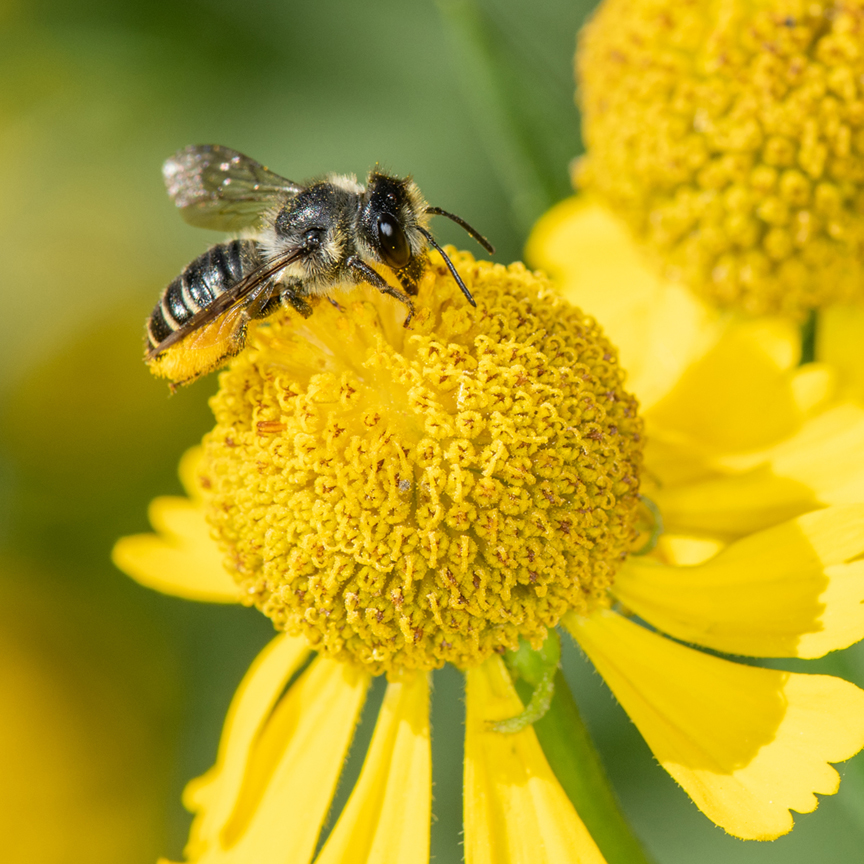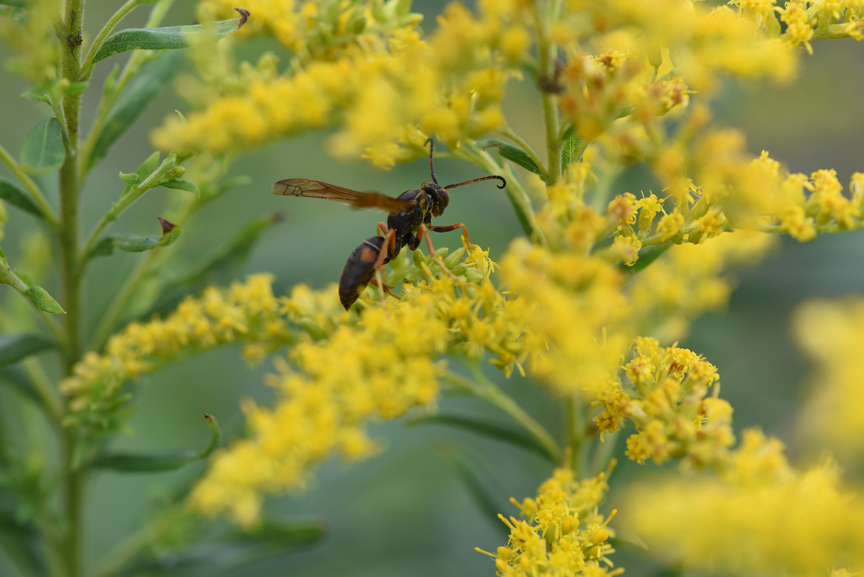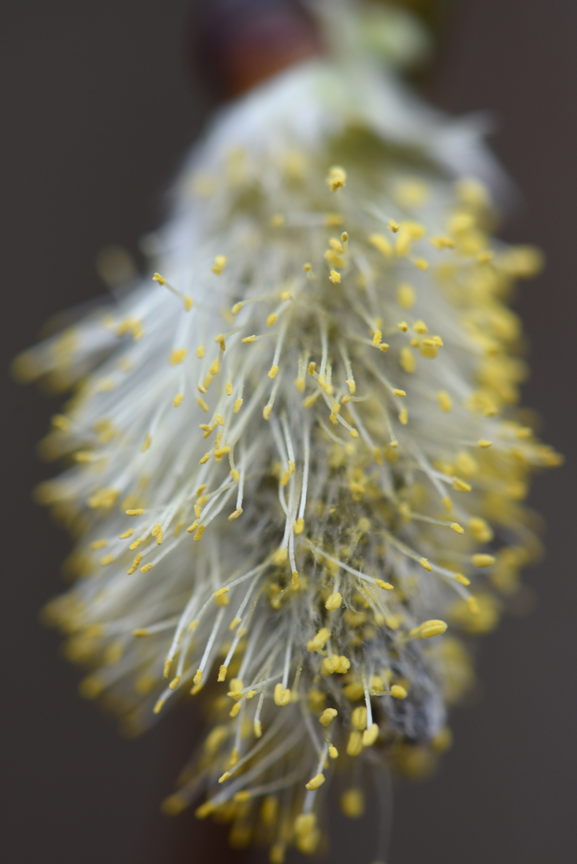Tips for creating a pollinator-friendly garden
Posted on: September 19, 2019 | Written By: Doug Oster |
Heather Holm and her husband were exploring Denmark, and as he delved into his family tree, the understanding spouse also knew he’d be spending time with flowers … as Holm’s passion for pollinators transcends international boundaries and vacation time. “I’m always interested in reading landscapes,” she says of the trip. “I was out looking for bees and making my husband go to any kind of garden we could find,” she adds with a laugh.
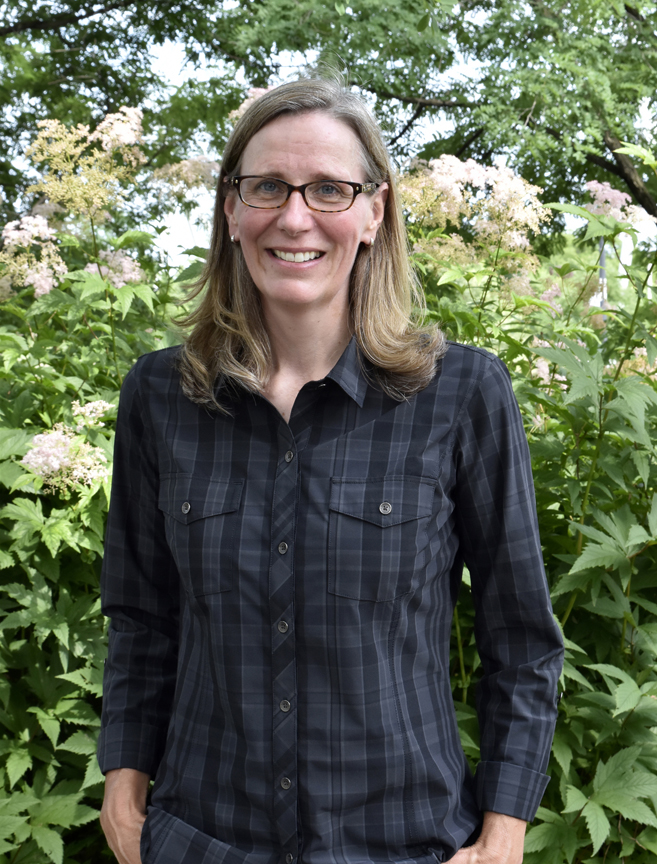
Heather Holm is an author and pollinator educator who will be spending two days at the Pittsburgh Botanic Garden teaching homeowners about the benefits of pollinators
The author and educator’s interest in pollinators started while restoring native landscapes about 15 years ago.
“I became fascinated with what is pollinating these plants and the interactions,” she says of the relationship between insect and flower.
Holm observed the native landscapes were attracting many more pollinators than traditional gardens.
“That was really eye opening to me,” she says. “I started to notice seasonal and yearly patterns of flower visitors to specific plants. That’s what inspired me to write my first book. I’ve just kind of gone down the rabbit hole from there.”
“Pollinators of Native Plants,” published in 2014, profiles 65 different native plants and the beneficial insects that are attracted to their flowers.
She’s on a mission to teach gardeners how to transform their gardens into pollinator-friendly habitat. It’s hard to quantify how pollinators are faring, but most would agree they are struggling.
“It’s a mixed message,” she says, “partly because a lot of the native bees, there isn’t a lot of historical data on populations; bumblebees are the exception.”
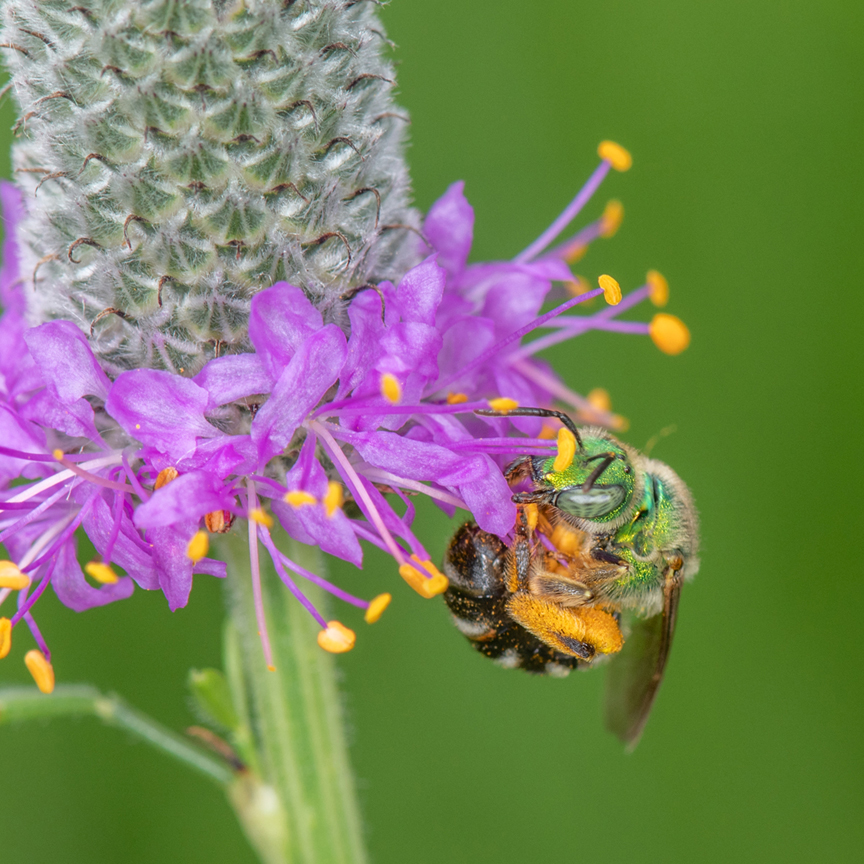
Scientists have studied them for more than a century, and the data is troubling.
“There’s significant declines in a lot of species,” she says of the bumblebees. “It can be assumed based on declines of other species and all the things impacting them, habitat loss, pesticides, climate change, that they are likely in decline, too.”
Another challenge for getting the message out about the importance of wild bees is the focus on honeybees, which get lots of press.
“That’s really challenging for the native bee cheerleaders,” she says, “because it can distract from the real issues and what people should be focusing on if they do want to do something to create or improve pollinator habitat in their own landscape.”
Some good news, though, is there’s been an uptick in interest from botanical gardens and nature centers in increasing awareness of the native insects.
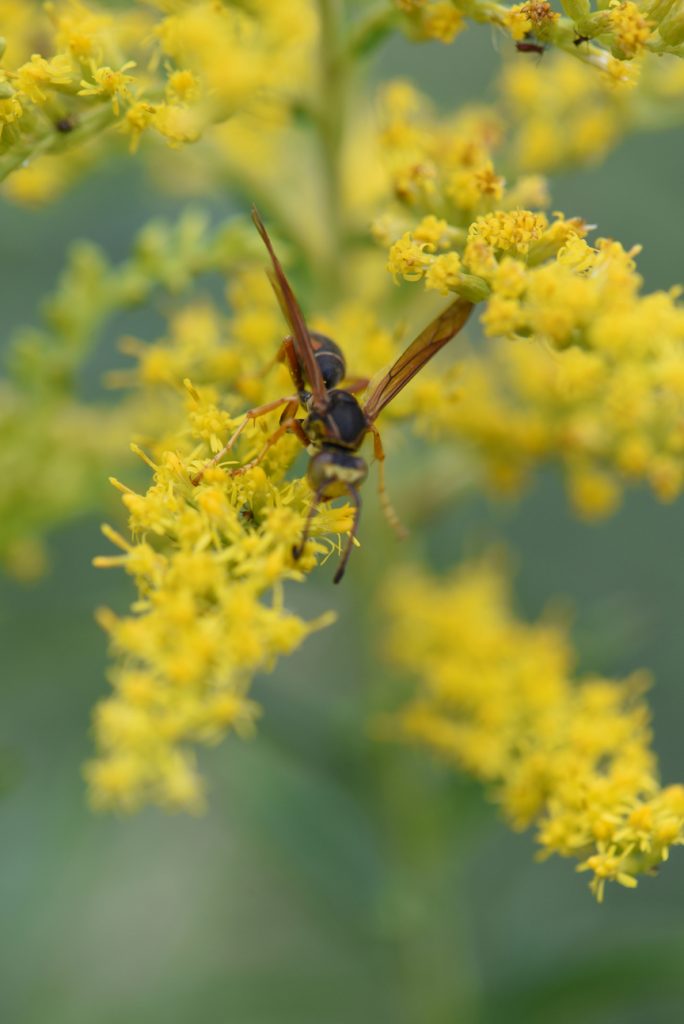
Goldenrod is one of the best plants at the end of the season for the insects. Photo by Doug Oster
Creating a pollinator-friendly garden
When thinking about putting together a pollinator-friendly garden, Holm has sage advice for homeowners. “The big thing is stop any kind of pesticide use,” she warns. “The second component is get some plants in the ground.”
Preferably that means native plants, which have evolved over centuries with the insect themselves. The other major consideration is having something in bloom for as long as possible during the season.
“People often forget about the importance of plants blooming in early spring and late fall,” Holm says. “The things that people often overlook are early flowering trees and shrubs.”
Anything from the willow species, like a native pussy willow, is a great early bloomer. Red maples and native perennials are also going to help. Things like bloodroot, false Solomon’s seal, Jacob’s ladder, Virgina waterleaf and others will benefit pollinators.
During the middle of the growing season, the good bugs have more choices, so it’s after mid-September when they need help. Growing anything from the aster family and goldenrod provides food for pollinators among other things.
Add nesting sites
She has some great tips for adding nesting sites to the garden. Placing a log in the garden lying on the ground is one method, and she says a lot of the cavity nesters like to nest in plant stems.
“Cut your garden down in late spring and leave some old flower stalk stubble,” Holm says.
The bees will nest in the remains of last year’s growth. She monitors soil temperature in the spring and often waits until mid-May in Minnesota to cut the garden down.
Things like asters, coneflowers, black eyed Susans, goldenrod, monarda and others are good choices. Woody shrubs like elderberry, sumac and raspberry canes will also make great nesting sites when cut. Leave at least several inches of the stem in place.
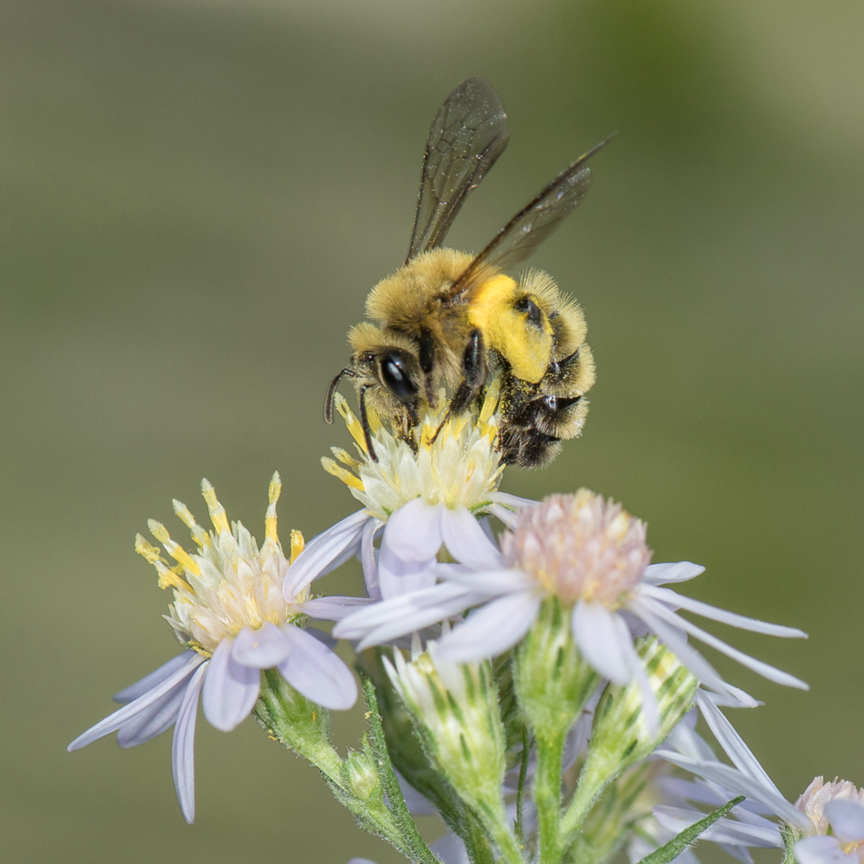
A mining bee. Photo by Heather Holm
Pollinators need help from gardeners, and Holm is passionate about spreading the word. She’s seeing more homeowners trying to help the good bugs.
“I’m very encouraged,” she says. “It is making people think a little bit differently about what’s important in their gardens and what they mean to them. By people becoming engaged in more than creating just a pretty thing to look at, that it’s a live functioning ecosystem that we have to have in yards and we’re a part of that, not just looking at it. I think that’s the sea change that pollinator awareness is creating, and it’s very hopeful. I’m very hopeful.”
Doug Oster is editor of Everybody Gardens, a website operated by 535Media, LLC. Reach him at 412-965-3278 or doster@535mediallc.com. See other stories, videos, blogs, tips and more at everybodygardens.com.
Details: For more on Heather Holm and how to find her books, go to pollinatorsnativeplants.com.
Buying local plants
Native plants can be found at local nurseries, but there are two local sources that sell natives exclusively.
- Audubon Society of Western Pennsylvania’s Native Plant Center in Fox Chapel, 412-963-6100.
- Sylvania Natives in Squirrel Hill, 412-596-4989.
More from Everybody Gardens
Audubon Society will help convert landscape into certified backyard habitat.
